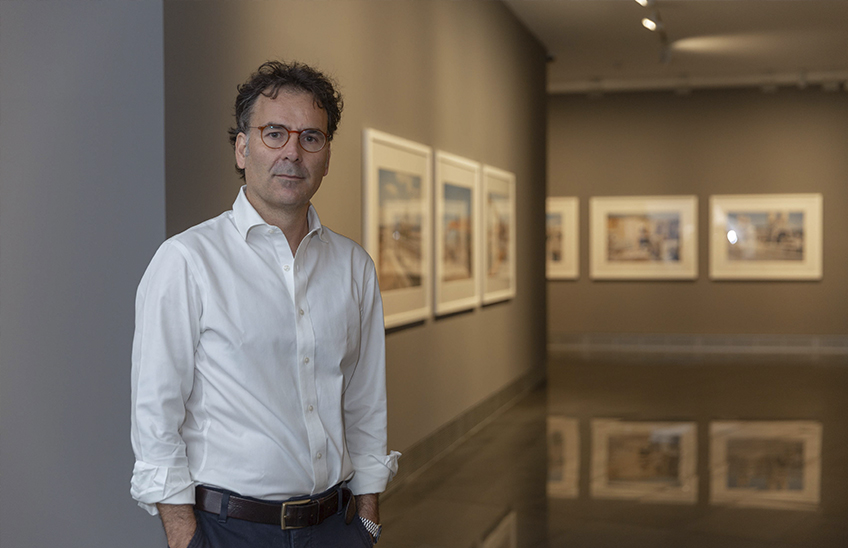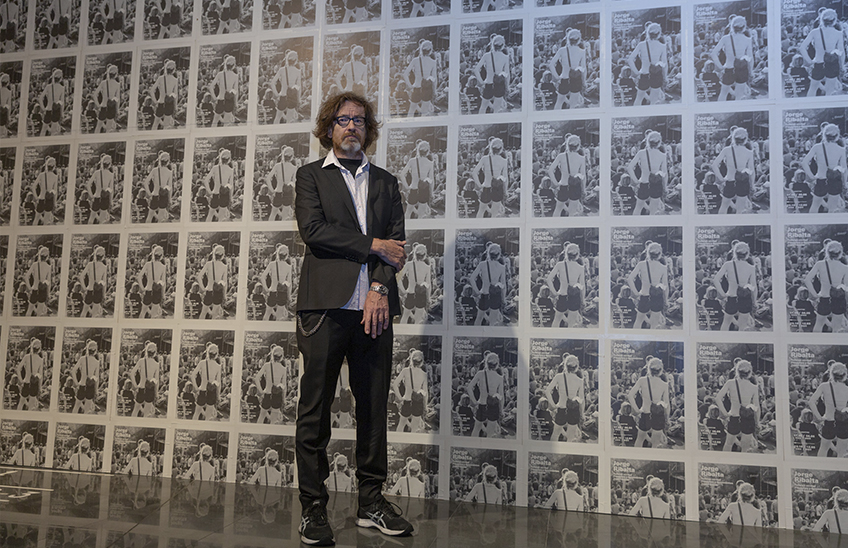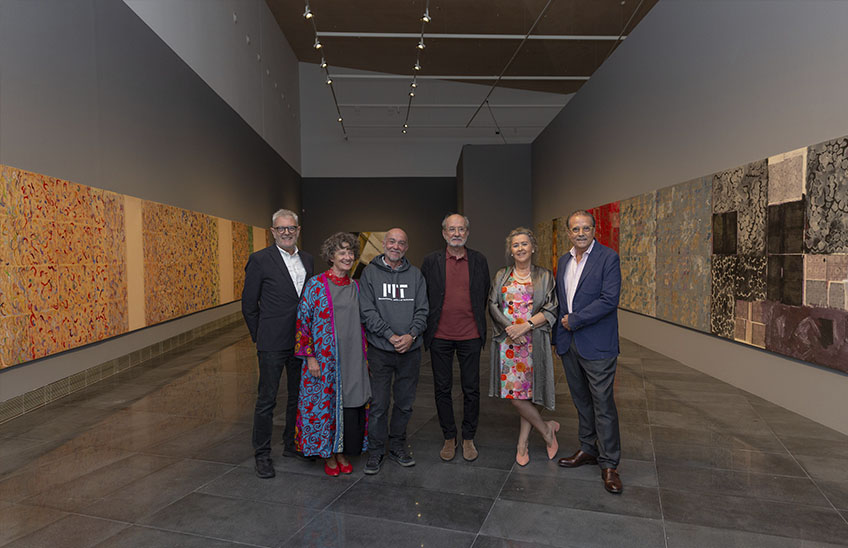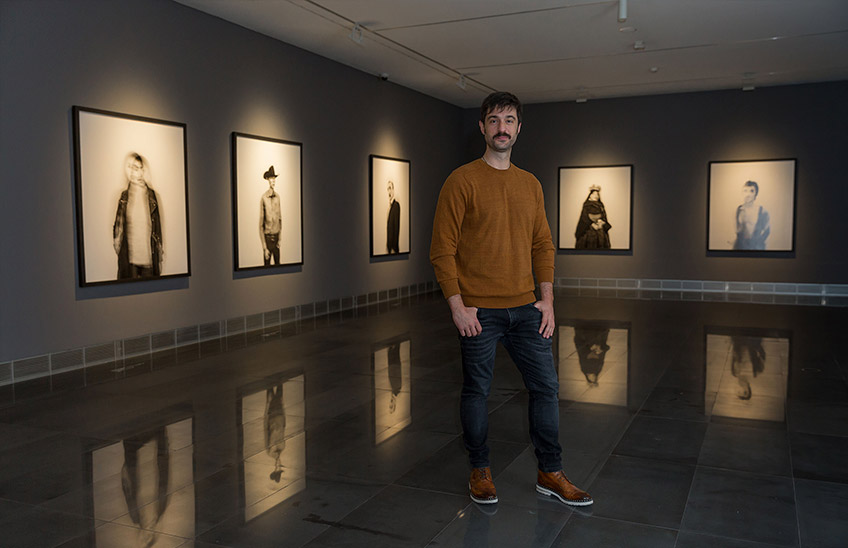Science and art go hand in hand: the Science Museum and the MUN inaugurate the exhibition 'Reazione Nera. Cajal and the nervous impulse of photography'.
The proposal is based on original drawings and microphotographs made by Ramón y Cajal and a series of pieces by the curators Martí Llorens and Rebecca Mutell.
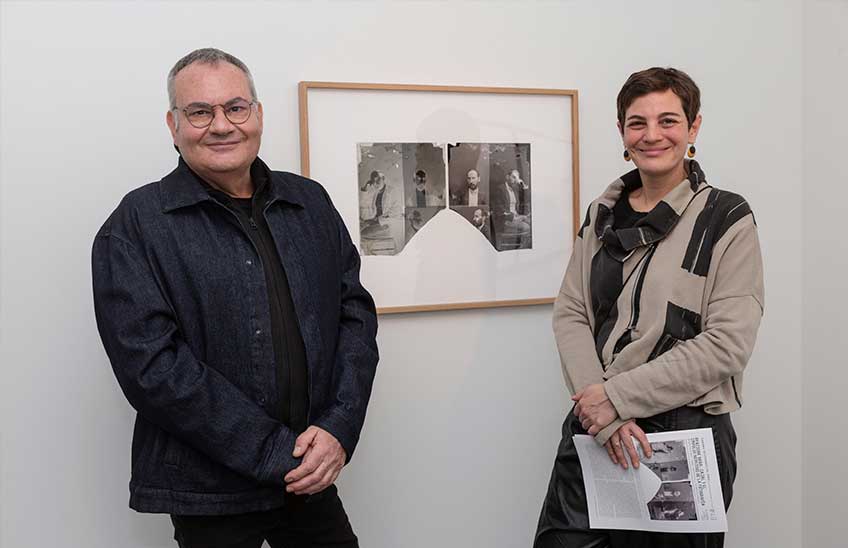
FotoMANUELCASTELLS/Curators and artists Martí Llorens and Rebecca Mutell in one of the exhibition rooms at the MUN.
09 | 02 | 2023
A scientific-artistic laboratory open to the public. This is Reazione nera. Cajal and the nervous impulse of photographythe exhibition that the Science Museum of the University of Navarra and the Museum of the University of Navarra have inaugurated this February 9th. The sample, curated by the artists Martí Llorens and Rebecca Mutell, can be visited until April 16 in the José Ortiz Echagüe Space of the MUN. Its goal is to take the visitor beyond the material aspect of photography and show it as a living organism, susceptible to be studied through its "organic" life. In their presentation to the media, the curators were accompanied by Ignacio López Goñi, director of the Museo de Ciencias Universidad de Navarra, and Valentín Vallhonrat, director artistic of the MUN together with Rafael Levenfeld.
The proposal is structured around original drawings and microphotographs made by the scientist Santiago Ramón y Cajal and a series of pieces made for this exhibition by Llorens and Mutell from their own archives and photographic archives. The artists and curators propose to enter them through microscopic vision and thus discover their "neuronalStructures ".
"This project tries to investigate and suggest connections between the scientific and artistic procedure in terms of the essential role that capacities such as imagination and intuition play in the work performed in both fields. On the one hand, it does so by underlining the importance that both his training and internship artistic skills as a draftsman and painter, as well as his profound knowledge practical and technical knowledge of the photographic medium, had in Cajal's research ", explain Llorens and Mutell. In this sense, they emphasize that "Cajal's relationship with photography was not purely a tool to visualize and represent his microscopic experiments. His knowledge of photographic Chemistry was fundamental to develop his neuronal theory, and at the same time allowed him to create photographic pieces of great value today".
On the other hand, they point out that, the project, "starting from the observation and exploration of the physical microstructure of photographs - invisible to our eyes, without a microscope - explores the infinite connections and subsequent readings that the photographs themselves arouse when they are understood and shown as genuine physical artifacts devised to provide, in an explicit and accessible way, visual information".
NEUROSCIENCE AND ART
The exhibition takes its degree scroll from a finding carried out at the beginning of the 20th century by the scientist Camilo Golgi, who was able to distinguish a black dye that allowed the identification of neurons and their interaction: the Reazione nera. This is a crucial scientific process for neuroscience and for the work of Ramón y Cajal, the best Username of the "black reaction", since he used it as the basis for his own discoveries. This sample also seeks to commemorate and thank the exceptional work of Ramón y Cajal, following in the wake of the commemorations held during 2022, coinciding with the 170th anniversary of the scientist's birth.
EXHIBITION SPACE
In the first part of the exhibition space that houses the sample a small selection of original drawings and microphotographs made by Ramón y Cajal from the high school Cajal - CSIC in Madrid is exhibited. "With these pieces, we do not intend to develop a historical or technical speech on the neuronal research made by Cajal but, rather, to suggest to the viewer his method of work through these two disciplines, the way in which he used and showed these two types of graphic documents. In final, the use in which he recreated himself to develop and expose the contents of his research", explain Martí and Mutell.
The second part includes his proposal of research on "the nervous impulse of photography": "In this space we understand and show photography as a genuine artifact of knowledge that we assimilate to a real brain histological sample and that is why we have included an original collection of histological samples from Cima (University of Navarra)".
A series of microphotographs of different photographic supports made by the curators and artists especially for sample are exhibited here: "With a microscope, we have observed and photographed various photographic supports; from a metal support, such as a mid-nineteenth century daguerreotype from the United States, to the paper surface of a color copy from a Barcelona family album from the 1960s. Without wanting to make a complete Catalog of all the existing photographic supports, we believe that the richness and variety of Structures and forms that these microphotographs show us, help us to understand and show the photographic medium as a complex element that is also capable of departing from its manifest informative and aesthetic character, which can help us to interpret it as a changing organic element of complex structuring".

